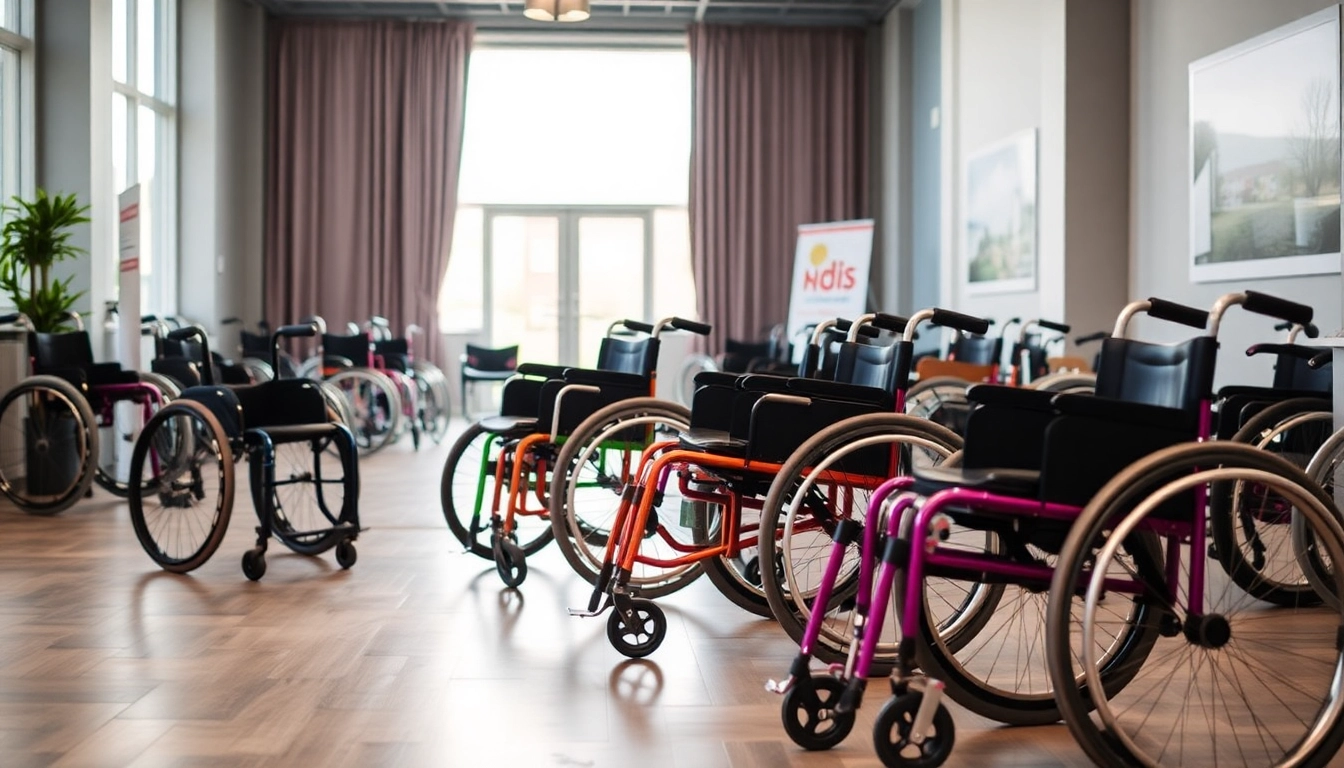Introduction to NDIS Fund Wheelchairs
The National Disability Insurance Scheme (NDIS) is a vital platform in Australia that empowers individuals with disabilities by providing them with funding options to access essential services and equipment. One of the key resources available through this scheme is the funding for wheelchairs, which plays a significant role in enhancing mobility and independence for users. Understanding how the NDIS functions and the various wheelchair options it covers is crucial for those seeking to improve their mobility through these means. This guide will explore the intricacies of the NDIS funding available for wheelchairs, types of wheelchairs covered, guidelines for selecting the right wheelchair, best practices for navigating the funding process, and real-life success stories that exemplify the impact of these adaptations. For those interested in the details of the funding available, explore more about the NDIS fund wheelchair options on the TK Care website.
What is the NDIS?
The NDIS is a government initiative intended to provide support for Australians with a permanent and significant disability. It is designed to offer funding for various supports, including healthcare, therapy services, and necessary equipment, enabling individuals to lead fulfilling lives. The program is revolutionary as it shifts the control over the types of support received directly to the participants, ensuring that their unique needs and preferences are prioritized. Through individualized funding packages, the NDIS addresses the diverse requirements of people with disabilities, facilitating access to aids, adaptations, and services that significantly enhance their quality of life.
Importance of Wheelchairs in Mobility
Wheelchairs serve as critical mobility aids for individuals with mobility impairments, significantly impacting their independence and ability to engage socially, professionally, and recreationally. For many users, wheelchairs represent the difference between isolation and a fulfilling, active lifestyle. The choice between manual and powered wheelchairs can influence a user’s overall wellbeing and autonomy. Furthermore, advancements in wheelchair technology have led to specialized models that cater to specific health conditions or lifestyle needs, making it essential to understand the range of options available.
Overview of NDIS Funding for Wheelchairs
The NDIS provides funding for wheelchairs under its “Assistive Technology” category, emphasizing the need for appropriate devices that enable users to achieve their personal goals. Funding is not merely based on a one-size-fits-all approach; rather, it is tailored to the individual’s requirements, assessed through a plan that considers their living situation, mobility needs, and long-term objectives. The NDIS process includes assessments to determine eligibility, establish budget allocations, and facilitate the purchase or rental of suitable wheelchairs that align with participants’ lifestyle needs. Understanding how to navigate this funding landscape is crucial for beneficiaries aiming to maximize their mobility options.
Types of Wheelchairs Covered by NDIS
Manual Wheelchairs
Manual wheelchairs are designed for users who have sufficient upper body strength and coordination to propel themselves using hand rims. These wheelchairs offer versatility, portability, and cost-effectiveness, making them popular options for many NDIS participants. There are various types of manual wheelchairs including:
– Transport Wheelchairs: Lightweight designs primarily for assisted transport.
– Standard Active Wheelchairs: Built for independent use, often adjustable for comfort.
– Specialty Manual Wheelchairs: Tailored for specific conditions like postural needs or sports activities.
Powered Wheelchairs
Powered wheelchairs, also known as electric wheelchairs, cater to individuals with limited upper body mobility or endurance. These models use battery-powered motors, allowing users to navigate with ease. The NDIS supports various powered wheelchair options including:
– Standard Powered Wheelchairs: Basic models suitable for daily use.
– Fully-Adjusted Powered Wheelchairs: Customizable for comfort and support based on the user’s medical needs.
– Power Chairs with Advanced Features: Equipped with technology for tilt, recline, and standing functions for users with specific health issues.
Specialized Wheelchairs for Specific Needs
Specialized wheelchairs are crucial for individuals with unique medical requirements that standard options cannot meet. These may include:
– Reclining Wheelchairs: For users who need to change position frequently for pressure relief.
– Tilt-in-space Wheelchairs: Providing better weight distribution and repositioning for users with limited mobility.
– Sports Wheelchairs: Designed for use in various sports, blending performance with user comfort. Examples are basketball and racing wheelchairs.
How to Choose the Right NDIS Fund Wheelchair
Assessing User Needs and Preferences
Selecting the right wheelchair is a personal journey that should begin with a comprehensive assessment of the user’s needs and preferences. Factors to consider include:
– Physical Abilities: Assessing upper body strength, coordination, and any other physical limitations.
– Lifestyle Considerations: Understanding where and how the wheelchair will be used—indoor, outdoor, or both.
– Comfort and Support Levels: Determining the need for specialized seating or additional support.
Understanding the Funding Process
The NDIS funding process involves several critical steps. First, an eligibility assessment is conducted, followed by a development of the NDIS plan which outlines the supports and funding you’ll receive. Ensure to:
– Maintain Clear Records: Document your needs, reviews, and suggestions from healthcare professionals to support your application.
– Communicate Your Requirements: Clearly articulate your mobility goals and expectations to the NDIS planners to secure appropriate funding arrangements.
Consulting with Healthcare Professionals
Engaging with healthcare professionals such as occupational therapists is essential when choosing a wheelchair. They can assist in:
– Conducting Detailed Assessments: Evaluating postural requirements, mobility needs, and lifestyle situations.
– Providing Recommendations: Suggesting suitable wheelchairs that align with the individual’s needs, making the funding request more robust and specific.
Best Practices for Navigating NDIS Funding
Documenting Your Needs Effectively
Effective documentation is critical to ensuring smooth access to NDIS funding for wheelchairs. Users should:
– Keep Comprehensive Records: Include medical reports and prescription letters that outline the necessity for mobility aids.
– Prepare Supporting Evidence: Document your daily activities and any mobility challenges experienced without the aid of a wheelchair.
Working with NDIS Planners
Developing a strong relationship with your NDIS planner can significantly enhance your funding experience. This includes:
– Frequent Communication: Regularly update them on any changes in your needs or circumstances.
– Being Prepared for Meetings: Carry all necessary documentation and have a clear outline of your needs and desired outcomes.
Appealing Funding Decisions
If faced with a funding decision that does not meet your requirements, it is essential to know how to appeal. You should:
– Understand the Appeal Process: Familiarize yourself with the NDIS appeal processes to ensure you do not miss any deadlines.
– Gather Additional Evidence: Collect further evidence and rationale to support your appeal effectively.
Real-Life Success Stories and Testimonials
User Transformations Through NDIS Fund Wheelchairs
Numerous success stories illustrate the profound impact that NDIS funded wheelchairs can have on individuals’ lives. For example, consider the story of Sarah, a young adult who was able to regain independence after receiving funding for a powered wheelchair tailored to her mobility needs. Her ability to navigate her community led to new friendships and job opportunities, showcasing how assistive devices promote social inclusion and independence.
Impact of Adaptive Technology on Lives
The role of adaptive technology cannot be overstated in the context of mobility and independence. Many users have reported transformations in their daily lives due to the enhanced capabilities afforded by specialized wheelchairs and related technologies. Realigning one’s environment with adaptive technologies and wheelchairs has led to increased connections, improved mental health, and opportunities for engagement, further magnifying the importance of accessible funding through the NDIS program.
Community and Support Resources
Various community resources provide support for users navigating the NDIS process. Engaging with local disability communities can foster connections and access to shared experiences, while online forums offer opportunities to discuss specific needs or share success stories. Additionally, dedicated NDIS planners and supporters are available to help users capitalize on the available funding options efficiently.



